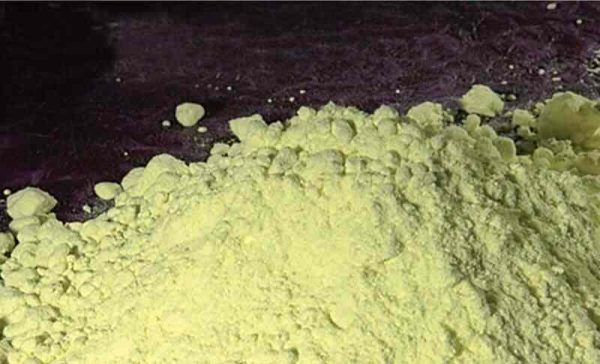Stability of industrial sulfur: There are three crystal forms of sulfur block, namely orthorhombic sulfur, monoclinic sulfur and amorphous sulfur. Among them, orthorhombic sulfur Z is stable, and common commercial products have two crystal forms. The stable sulfur at 95.6°C is sα and the melting point is 112.8°C. The stable sulfur above 95.6°C is sβ, and the melting point is 114.5°C. Both forms of sulfur exist in the form of the eight-membered ring S8, but their lattice arrangements differ. Insoluble sulfur products without effective chemical stabilization remain unstable and can even be reduced to soluble low-molecular-weight sulfur within a few days. As a metastable species, insoluble sulfur tends to return to soluble low molecular weight sulfur in the natural environment.
In the field environment, if sulfur is exposed to sunlight for a long time, under the influence of ultraviolet rays, high temperature, microorganisms and oxygen, insoluble sulfur will be decomposed, reduced to soluble low-molecular-weight sulfur, and gradually oxidized to sulfur dioxide, which becomes sulfurous acid after absorbing water. For example, further oxidation can be converted to sulfuric acid. Even chemical stabilizer-treated insoluble sulfur can still be significantly reduced under long-term storage conditions, under the action of heat above 105 °C and close to the melting point, or under the induction of alkaline substances (especially amines).
Methods to improve sulfur stability: Halogens and their derivatives can be used as insoluble sulfur stabilizers, such as iodine, bromine, ferric chloride, titanium tetrachloride, phosphorus tetrachloride, phosphorus pentachloride, silicon tetrachloride, a Sulfur chloride, sulfur dichloride and phosphorus oxychloride, as well as dilute acids, hydrogen sulfide, sulfides, hydrocarbon oils, olefins, terpenes, some Lewis acid-base systems, etc. Both ends of the halogen atom and hydrogen atom in the stabilizer are bonded with sulfur atoms to stabilize the insoluble sulfur.

